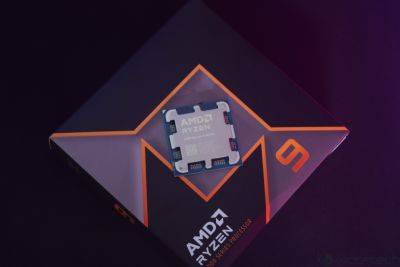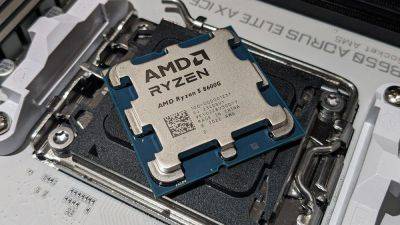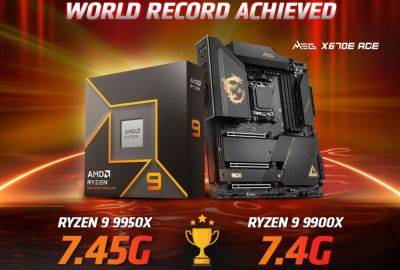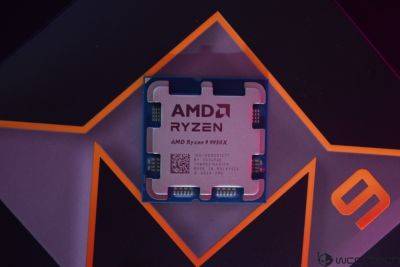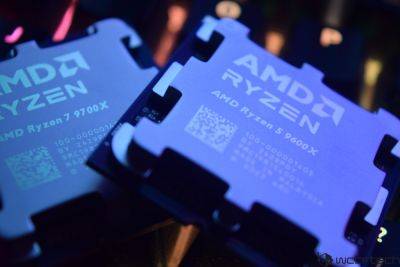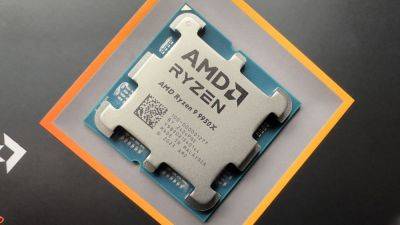AMD Ryzen 7 9700X review
Zen 5 is finally here for desktop PCs and having already tasted what it is like with six cores, in the AMD Ryzen 5 9600X review, it's time to see what difference two more cores, four more threads, and a tiny bit more clock speed all makes—that's right, it's our review of the Ryzen 7 9700X.
AMD has stuck to the same fundamental floorplan for the 9700X as it has with the last generation 7700X and the Zen 3-powered 5700X. Underneath the heatspreader, you've got two chiplets: one CCD (Core Complex Die), which houses all the processing cores and cache, and one IOD (Input/Output Die) that's home to a tiny integrated GPU, PCIe and USB hubs, and the RAM controllers.
Where the CCD in the 9600X has two cores disabled, the 9700X comes with a fully enabled eight-core chiplet and a marginally higher boost clock (5.5 vs 5.4 GHz).
That 8.3 billion transistor CCD sports the latest AMD Zen 5 architecture, of course, with more L1 cache, more internal bandwidth, superior floating point support, a fancier branch prediction unit, and so on. The changes are pretty comprehensive and AMD claims that Zen 5 has an average IPC (instruction per clock) uplift of 16% over Zen 4, though not every application is going to see such an increase.
Cores: 8
Threads: 16
Base clock: 3.8 GHz
Boost clock: 5.5 GHz
L3 Cache: 32 MB
L2 Cache: 8 MB
Unlocked: Yes
Max PCIe lanes: 24
Graphics: Radeon Graphics
Memory support (up to): DDR5-5800
Processor Base Power (W): 65
Maximum Package Power (W): 88
Recommended customer price: $359 | £340
I won't reiterate all the motherboard swapping and BIOS shenanigans I experienced testing the 9600X in this review, but it's worth noting they impacted the Ryzen 7 9700X just as much. Basically, the AM5 motherboard I used (a ROG Crosshair X670E Hero) was supplying the chip with a little bit too much power when idle, resulting in slightly elevated temperature—this isn't something exclusive to Asus boards but not every configuration will experience the issue.
That said, the 9700X did idle a


